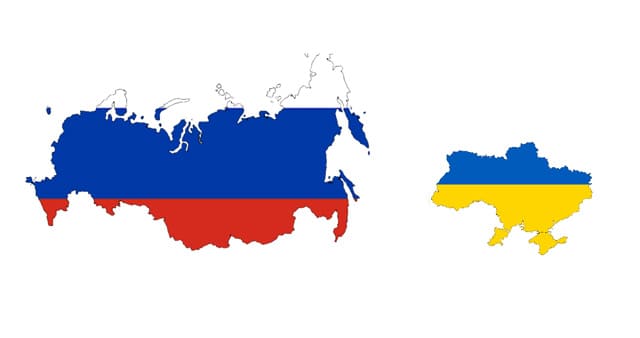The ongoing conflict between Russia and Ukraine has witnessed a series of events, particularly escalating in 2023. Below is a synthesis of recent occurrences in the conflict, especially focusing on September 2023, along with some earlier context:
The conflict, which escalated in February 2022, witnessed intensified military actions, with Russia initiating a “special military operation” in eastern Ukraine on February 24, 20221. This led to a series of events over the following months, including a stalemate phase from November 12, 2022, to June 7, 2023, followed by a Ukrainian counteroffensive from June 8, 2023, to August 31, 20232.

Beginning September 1, 2023, drone activities became prominent with three drones intercepted by Russian air defenses over Pskov and Belgorod Oblasts. Additionally, another drone reportedly hit a factory that manufactured electronic components for rockets in Lyubertsy, Moscow Oblast, causing the closure of airports in the area. The same day saw a shelling incident in Kherson, Ukraine, that resulted in a fatality3.
The month of September continued to witness significant military actions and political developments:
- On September 2, Ukrainian military claimed to have breached the first line of Russian defenses in the Zaporizhzhia front, advancing towards the succeeding defense line3.
- September 3 marked an overnight drone attack by Russia on the port of Reni, Ukraine. Meanwhile, Ukraine claimed to have destroyed a Russian patrol boat using a Bayraktar TB2 drone in the Black Sea3.
- Throughout early September, various military aid packages were pledged or delivered to Ukraine from countries like the United States and Germany, providing critical resources such as armored vehicles, anti-aircraft guns, and missiles3.
- A significant event occurred on September 6, when a missile struck the central market of Kostiantynivka, Donetsk Oblast, killing at least 17 people and injuring 33 others3.
- By September 7, drone attacks persisted across Russia with significant damage reported in various regions. In the same period, Russian drones attacked and destroyed more than 270,000 tonnes of grain in the Danube river ports, as reported by Ukrainian authorities3.
During the month, there were also political developments, including the visit of U.S. Secretary of State Antony Blinken to Kyiv, announcing an aid package to Ukraine valued at more than $1 billion on September 63.
The conflict has had broad geopolitical implications, drawing international concerns and efforts to aid Ukraine, as well as leading to a travel advisory level 4 (Do Not Travel) due to the heightened risks in the region.
The history of conflict between Russia and Ukraine has roots stretching back centuries, but for the sake of brevity, this summary will focus on more recent tensions leading up to the 2022/23 conflict.
- Post-Soviet Era (1991-2013):
- After the fall of the Soviet Union in 1991, Ukraine declared independence, and relations between Russia and Ukraine were relatively stable for some years. However, disputes arose over issues like the division of the Soviet Black Sea Fleet and the status of Crimea (a region with a significant ethnic Russian population and home to a major Russian naval base).
- Orange Revolution (2004):
- The Orange Revolution in Ukraine in 2004 brought pro-Western leaders to power, straining relations with Russia as Ukraine sought closer ties with the European Union and NATO.
- Gas Disputes (2005-2009):
- A series of gas disputes occurred between Russia and Ukraine from 2005 to 2009, where Russia cut off gas supplies to Ukraine due to payment disputes, which also affected gas supplies to Europe.
- 2008 Bucharest Summit:
- At the 2008 NATO Bucharest Summit, Russia strongly opposed the prospect of NATO membership for Ukraine.
- Euromaidan and 2014 Ukrainian Revolution:
- In late 2013 and early 2014, the Euromaidan movement and subsequent Ukrainian revolution led to the ousting of pro-Russian President Viktor Yanukovych. This was a pivotal moment that significantly strained relations between Russia and Ukraine.
- Annexation of Crimea (2014):
- In March 2014, Russia annexed Crimea following Ukraine’s 2014 Euromaidan protests and the subsequent removal of President Viktor Yanukovych.
- War in Donbass (2014-ongoing):
- Shortly after the annexation of Crimea, fighting broke out in the eastern Donetsk and Luhansk regions of Ukraine where government troops clashed with separatists. The War in Donbass resulted in a protracted conflict with numerous ceasefire attempts failing to hold.
- Minsk Agreements (2014, 2015):
- The Minsk agreements, brokered by the Organization for Security and Co-operation in Europe (OSCE), aimed to halt the conflict in Donbass, but have largely failed to stop the fighting or lead to a political resolution.
- Kerch Strait Incident (2018):
- In November 2018, Russia captured three Ukrainian navy vessels and their crews in the Kerch Strait, further escalating tensions.
- Ukrainian Orthodox Church Independence (2019):
- In January 2019, the Ecumenical Patriarchate granted autocephaly (independence) to the Orthodox Church of Ukraine, a move opposed by Russia and the Russian Orthodox Church.
These events set the stage for the ongoing military conflict that escalated in 2022/23, with Ukraine’s ambitions for closer ties to the West and Russia’s desires to maintain influence in the region being central points of contention.
It’s very difficult times, is it still safe to travel to Russia? or is it safe to travel at all to Ukraine?
Hi my loved one! I wish to say that this post is amazing, great written and come with approximately all important infos. I?¦d like to peer more posts like this .